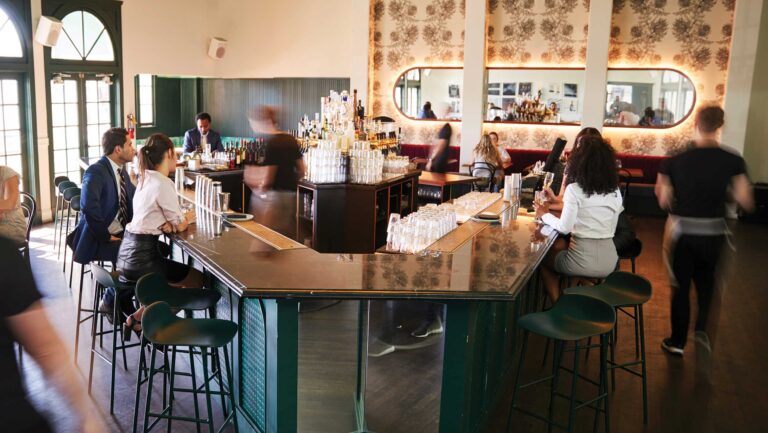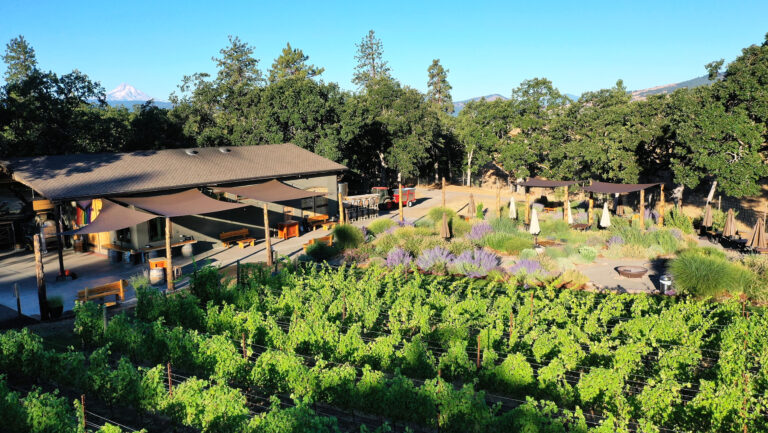When shopping at Vermont liquor stores, it’s not uncommon to see people pushing fully loaded carts to the checkout counter. But rather than stocking up for the party of the year, it’s quite likely that they’re simply replenishing their bar’s—or restaurant’s—inventory.
Vermont is one of the 17 states in the U.S. that adopted a control model after Prohibition ended. (There are jurisdictions within other states that operate control models, although those states as a whole don’t practice one.) The definition of “control” varies, but what all 17 states have in common is that they’re the wholesalers of distilled spirits. In Vermont, the state buys alcohol from manufacturers and brokers and distributes it to liquor stores licensed by the state, which then sell it to the public—and to bars and restaurants.
Buyer Viewpoints
While smaller establishments literally go shopping for their purchases, buyers for larger outlets, like Sugarbush Resort in Warren, call in their orders, which are put together to be picked up later in the week. Shawn Fuschetto, the resort’s head bartender, buys for its catering department and two of its restaurants. With 23 years of experience behind the bar, he’s a pretty savvy navigator of the control system and says it works 90 percent of the time.

Don’t miss the latest drinks industry news and insights. Sign up for our award-winning newsletters and get insider intel, resources, and trends delivered to your inbox every week.
But the other 10 percent?
“Not so much,” Fuschetto says. At times, the state has switched up offerings without a word—for example, once it replaced a white whiskey with a bourbon barrel whiskey. “Now, this doesn’t seem like a big deal, except that was the only white whiskey available to us,” Fuschetto says. And back in the day, it felt to him as though the state waited an embarrassingly long time to stock Grey Goose. “It was a bit frustrating with all the out-of-state skiers at the time who ordered nothing but this product,” he says. “They couldn’t fathom why we didn’t stock it.”
Mark Frier owns three restaurants—The Reservoir, The Bench, and Tres Amigos—in Waterbury and Stowe. His biggest frustration with the control system is pricing. He’s only able to buy beer and wine at wholesale cost—not spirits. “We pay the retail price consumers pay [for spirits]. How does this make sense?” he says. “We should either be able to buy directly from the state, like any other wholesaler of goods, or the price should be lower at the store. This would then reflect the fact that we are buying this as a wholesale purchase and [that] we are not the final consumer.”
A Producer’s Take
Alex Weiss, the director of sales and brand management for Caledonia Spirits in Hardwick, which makes sought-after brands like Barr Hill and Tom Cat vodkas and gins, says that both control states and open markets present challenges. “One isn’t easier or more difficult than the other,” he says. “They just [comprise] completely different laws, risks, and contract requirements.” And after pitching his products to a bar or restaurant, Weiss doesn’t have the satisfaction of making a sale then and there. “I have to put faith in a buyer that they will do what they say they’re going to do,” he says. “It’s totally incumbent on that buyer to decide to go to the store and purchase the product.”
But once Weiss learns how a specific system works, he finds control states to be reliable partners. “Typically, the control state gives guidelines for what success looks like, such as revenue per six months or per year,” he says. “They’ll also tell you what failure looks like so you know what to watch out for before being delisted. Private distributors don’t do that.” There can also be less competition for smaller craft brands in control states because they don’t have the time or the money to navigate the systems. That’s good for the small brands that do, like Caledonia Spirits—and not so good for the brands that don’t.
A Distributor’s Perspective
Todd Bouton, the general manager for Farrell Distributing, which has offices in both Rutland and South Burlington, has worked for Farrell for 28 years and has extensive knowledge of the state’s market. Not only is Farrell one of the largest distributors in the state, but according to the company’s website, it was the first distributor licensed in Vermont after Prohibition ended. Bouton points out that the three-tier system “has allowed small craft breweries and wineries to get access to the largest and smallest of markets,” and he adds that wholesalers provide a route to market that would otherwise be difficult for small independent breweries and wineries to obtain.
“The fact that Vermont is a control state and handles the sale of spirits does not create any challenges for our business,” Bouton says. “The state DLC [Department of Liquor Control] regulates our industry and is also a competitor when it comes to the total share of alcoholic beverages being consumed in the state. We have found the DLC to be a fair and consistent regulator of our industry, and [it] has never used that role to impede our effectiveness in the marketplace.” He also emphasizes that Vermont has a burgeoning entrepreneurial alcohol industry that includes brewers, wineries, cider makers, and spirits producers. “This growth [in the] industry is exciting for Vermont,” he says, “but [it] strengthens the need for responsible regulation and oversight.”
The State’s Side
The state sees the system as a way to properly manage a controlled substance. Vermont’s DLC employs 14 law enforcement officers, and the profit from liquor sales pays their salaries. “If we didn’t have the control model, then the money would have to be found somewhere else,” says Gary Kessler, the DLC’s deputy commissioner. “We also pay for all the licensing and all the background checks for people in the alcohol business. And we require education—so anybody who sells this controlled product is trained to sell it.”
Kessler hasn’t seen a big push to overturn the control model in Vermont. But according to Steve Schmidt, the senior vice president of public policy and communications for the National Alcohol Beverage Control Association, there are “significant activities” in other states. He says, “There’s probably been a bill trying to privatize the system in virtually every legislature in Pennsylvania since the ’40s.”
Washington is the only state to have successfully eliminated the control model, which was accomplished through a citizen referendum in 2011 (and went into effect the following year). While the state has seen increased revenue, “generally, prices are up,” says Mikhail Carpenter, a spokesperson for the Washington State Liquor Control Board. The average price per liter of spirits went up about $3 for bars and restaurants and more than $4 for consumers. A 2014 study by the Alcohol Research Group in Emeryville, California, showed that 11 percent of Washington residents who voted yes on the bill would change their vote to no. Researchers concluded that the outcome of the election “would likely have been different if voters could know their future opinions of the actual situation resulting from privatization.” Interestingly, those who said they’d change their vote were responding more to the proliferation of stores selling spirits than to the increased prices.
So while there may be challenges to doing business in control states, it’s not always easier—or more cost effective—to work in an open market. Other states and jurisdictions weighing its elimination will likely look to Washington State for lessons learned. In the meantime, buyers, producers, and distributors in Vermont will continue to go about business as usual, buying and selling spirits according to the state’s DLC system.

Dispatch
Sign up for our award-winning newsletter
Don’t miss the latest drinks industry news and insights—delivered to your inbox every week.
Carolyn Malcoun is a food editor, recipe developer, and craft beer nerd. She came to Vermont to attend the New England Culinary School and fell in love with the state. She lives outside Burlington, where she’s a wannabe homesteader, hiker, and cyclist and aspires to pass the Beer Judge Certification Program.







